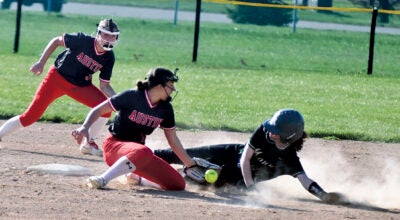Riege: Finding fish in the weeds
Published 6:26 pm Wednesday, July 23, 2014
By: Bob & Ginny Riege
The principles of analyzing water and approaching fish remain relatively constant regardless of the body of water you are fishing or the species of fish that you are after. It is important to understand that subtle changes in water temperature, oxygen, bottom structure, shadow lines, and similar factors make a significant difference in locating fish. Fish tend to locate along transitional zones. The bottom may change from sand to rock or from mud to weeds; a drop off may occur or slope into deep water; or water in one sector may be a slightly different color. The most important transition zones are the weeds. The weeds or vegetation may be the key to successful angling.
Bass seldom stay in open water and characteristically move toward some form of structure, if it is summer you can count on weeds. Muskies and northern pike are ambush feeders, lurking in or near weedbeds or an object that conceals them. Walleyes can be found on the weedline during the day feeding on small fish. Bluegill nest in shallow water in the spring and later can often be found where weedbeds drop off into deeper water.
Fish are wary. This helps them survive and can also make them difficult to catch. They utilize their excellent senses of vision and hearing, detect motion with unerring accuracy using their lateral line, and also use their sense of smell. Therefore, a cautious approach is required of an angler.
We all know that pike often hold in or near cabbage beds. But you can have too much of a food thing, especially early in the season. That is why middle to late season fishing in the weeds is important. Big fish will move shallow to feed on smaller fish as the water starts to cool.
With either natural bait or artificial lures, the presentation must be realistic. It should appear that the offering is part of the normal food chain. Hunger is certainly a major motivation factor, but fish also respond as predators and strike something that moves. At times, they even exhibit antagonistic behavior when biting an intruder to drive it away.
The fishing technique used when fishing weeds is very basic. The first basic method we all were exposed to when we were young, slip-bob fishing. The slip-bobber has taken more fish along a weedline than any other method. All you have to have is a bobber, split shot, and a fire-eye attractor hook. Attach a minnow or a crawler and sit back and wait for the fish to come to you. Another basic way is the use of the cast retrieve method with one of my favorite lures, the spinnerbait. I prefer to use the Reed Runner spinnerbaits from Northland Tackle or I might flip a Jaw-Breaker spoon into the thick matte of cover.
The spinnerbait is an excellent fish locator in those weeds. The spinnerbait can be moved along quickly with few hang-ups or it can be dropped into a spot to hover and whirl towards the bottom. In most cases the spinnerbait is weedless enough to allow the angler to move around a weedbed and then move on to another more productive weedline.
Finally, my all time favorite way to get the big fish out of the vegetation is to use a jig, not just any jig, but a heavy duty Jungle Jig. Sometimes you might see this referred to as a pig’n jig. With the jig I can maintain a quiet presentation. A quiet presentation of the lure also increases your ability to catch fish. As soon as the lure enters the water, swim it back through the cover. Swim the lure fast enough to keep it from sinking, and pump the rod every few seconds to create lure action. Eager fish holding in the cover will run right out of the bushes to chase the jig.
One word of caution regarding this weed action, the weeds can be very hard on your line especially at the knot. Retie often and use a quality abrasion resistant line such as Berkley IronSilk. This line has the abrasion characteristics and the ease of casting combined. Once you spool up this line you will not want any other.
As the season progresses towards August and early September remember to look for weeds that are still developed and green and look for isolated ambush points and you will notice how many big fish can be crammed into a miniscule patch of vegetation.


